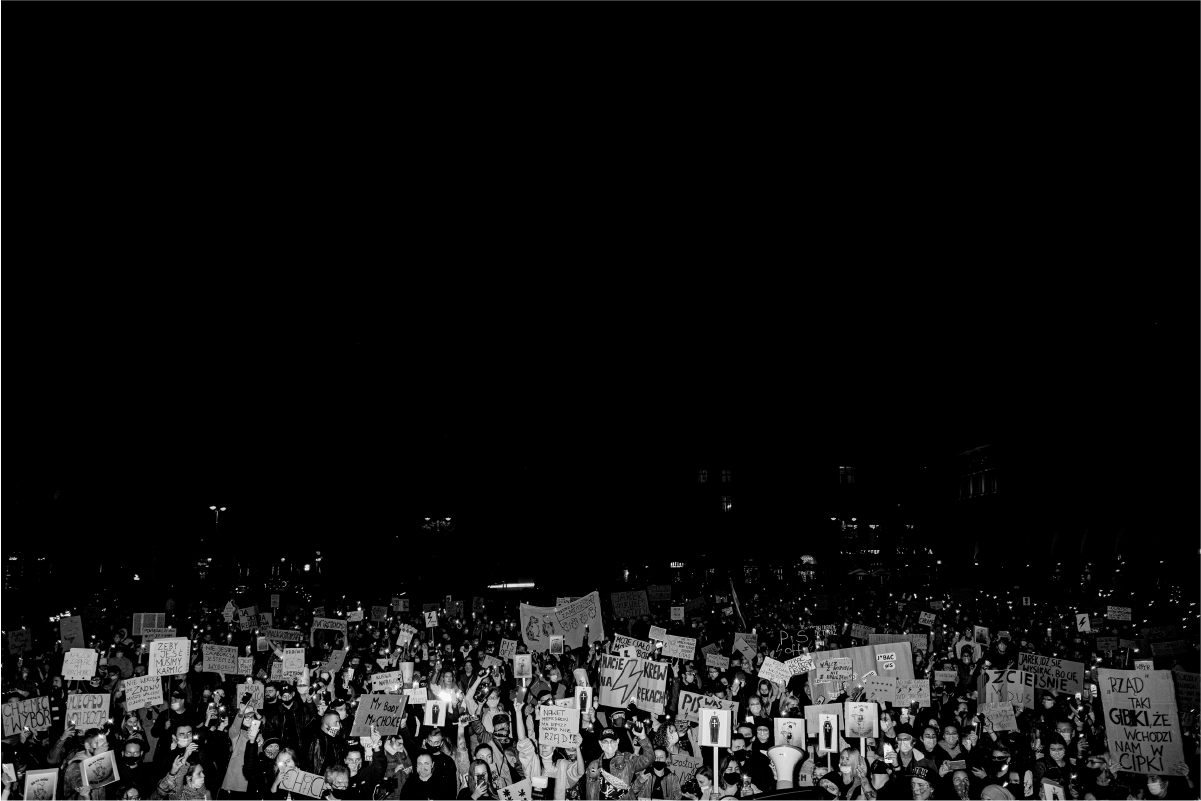
The Archive of Public Protests, Digital Photo, 2020. Courtesy of Artists.
カトリックの影響が強いポーランドでは、この判決以前から他の欧州諸国に比べ、人工妊娠中絶に対する厳しい制限が課せられていた。(国民のおよそ95%がカトリック教徒と言われているポーランドだが、中絶禁止を求める世論は弱く、国民の過半数は規制の厳格化に反対していた)共産主義政権下では合法だったものの、民主化後の1993年に施行された法律によって、レイプ、近親相姦、母体に危険がある場合と、胎児に重篤な障害があった場合にのみ人工妊娠中絶が制限されることになった。違反した場合は、最高で禁錮2年が科された。さらに2016年には、母体に危険がある場合のみ人工中絶手術を許可、違反した場合は最高で禁錮5年という厳しい法改正が行われようとした。しかし、大規模な抗議運動の影響もあり、議会においても世論においても改正反対の声が強く、法改正には至らなかった。
今回の判決では、胎児に異常がある場合にも中絶手術を受けることが不可能になる。この動きは、欧州の人権団体やアムネスティが署名を集めるなど国際的にも注目を集めてきた。2020年11月3日、ポーランド政府は一連の抗議活動を受けて、憲法裁判所の判決の交付を無期限に延期すると発表しているが、医療現場では違法行為と見なされることを恐れた医師が胎児の心拍がなくなるまで母体に対する治療を行わず、女性が死亡するという事故も報告されている(政府は医療ミスと主張)。
このインタヴューでは、ポーランド、アイルランド、アルゼンチン、米国における生殖の権利(reproductive rights)の歴史をめぐる展覧会「誰が涙の歴史を記述するのか:女性の権利に関わるアーティスト(Who Will Write the History of Tears: Artists on Women’s Rights)」を企画したキュレーターのひとりマグダレナ・リプスカに、2020年以降の抗議運動について、そして今このようなテーマで展覧会を開催することについて話をしてもらった。
ポーランドにおける人工妊娠中絶の全面的な規制と「女性スト」
Strict Abortion Laws and Women’s Strike in Poland
抗議運動について聞かせてください。たくさんのアーティストや芸術文化関係者が参加していましたか?ワークショップなどは開催されましたか?アーティストでない人のアート的実践があったりしましたか?
How do you see the recent protests in relation to contemporary art practices in Poland? Were there many artists or cultural workers joining the protests?
(人工妊娠中絶に関する)規制は、私たちの多くを本当にがっかりさせました。皆が通りに出てデモに参加しました。もう3年以上、政府のやり方に対して抗議運動が続いてきたことになります。
The code was so upsetting for many of us and everybody took on a street and because we were so hopeless in a way because anything can change, we try to protest government procedure for more than 3 years.
あなたも抗議運動に参加しましたか?
Were you also joining the protest?
もちろん。みんなが参加していました。パンデミック下でデモはある意味で違法なものだったけれど、本当にみんなが参加していました。巨大な運動だったのです。上空から撮った映像を見れます。ワルシャワの中心地が人で埋め尽くされました。すごいことでした。同じことを考えている人々の集団の中にいるということは、ある意味で本当にすばらしく感じました。抗議運動自体はある種のカーニバルみたいでしたね。みんな通りで踊ったりして。独特のスローダンスというゆっくりした踊り方を生み出して、それはとっても可笑しくて、詩的でもありました。
Yes, sure. I mean everyone was there. Although it was during the pandemic and protests were illegal in a way, but everyone was. It was a really big movement. You could see the photograph made from drone. Whole center of Warsaw was filled with people. It was really amazing. It was really amazing feeling to be in the group of people who think the same in a way. It was like a kind of carnival, people were dancing on a street, and they were creating this slow dance which was very funny and very poetic.
アーティストはどのように関わっていましたか?
How did artists in Poland participate to this protest?
アーティストも参加していましたが、あくまで市民として参加していたと思います。市民の抗議とアーティストの抗議を切り離すことはできません。例えば、アーカイヴ・オブ・パブリック・プロテストというアーティストと写真家のコレクティブは、2015年以降のポーランドで起こった抗議運動を記録しています。彼らは[今回の]「女性スト」だけではなくて、あらゆる抗議運動を記録してきました。私たちの展覧会でも彼らの写真を展示しています。それらの写真はとてもパワフルで、ある種のシスターフッドのようなものを写し出していると言えるかもしれません。共にストリートにいると感じること、人々がお互いを思いやっていること、そしてこの抗議運動の最も重要な部分であるスローガンなど[が写し出されています]。
Artists were participating as citizen. Citizen’s protests was not separated from artistic protests. One example of it is a collective called Archive of the Public Protests. They are a collective of artists and photographers, who are documenting the protest happening in Poland since 2015. They are not only documenting women’s protests, but basically documenting all the protests since then. We are showing their photographs took on the streets, very amazing. They are very powerful and they also show a kind of sisterhood, you could say, but it’s a feeling of being in the street together, people caring each other and they were also documenting the slogans, which was the main part of the protest.
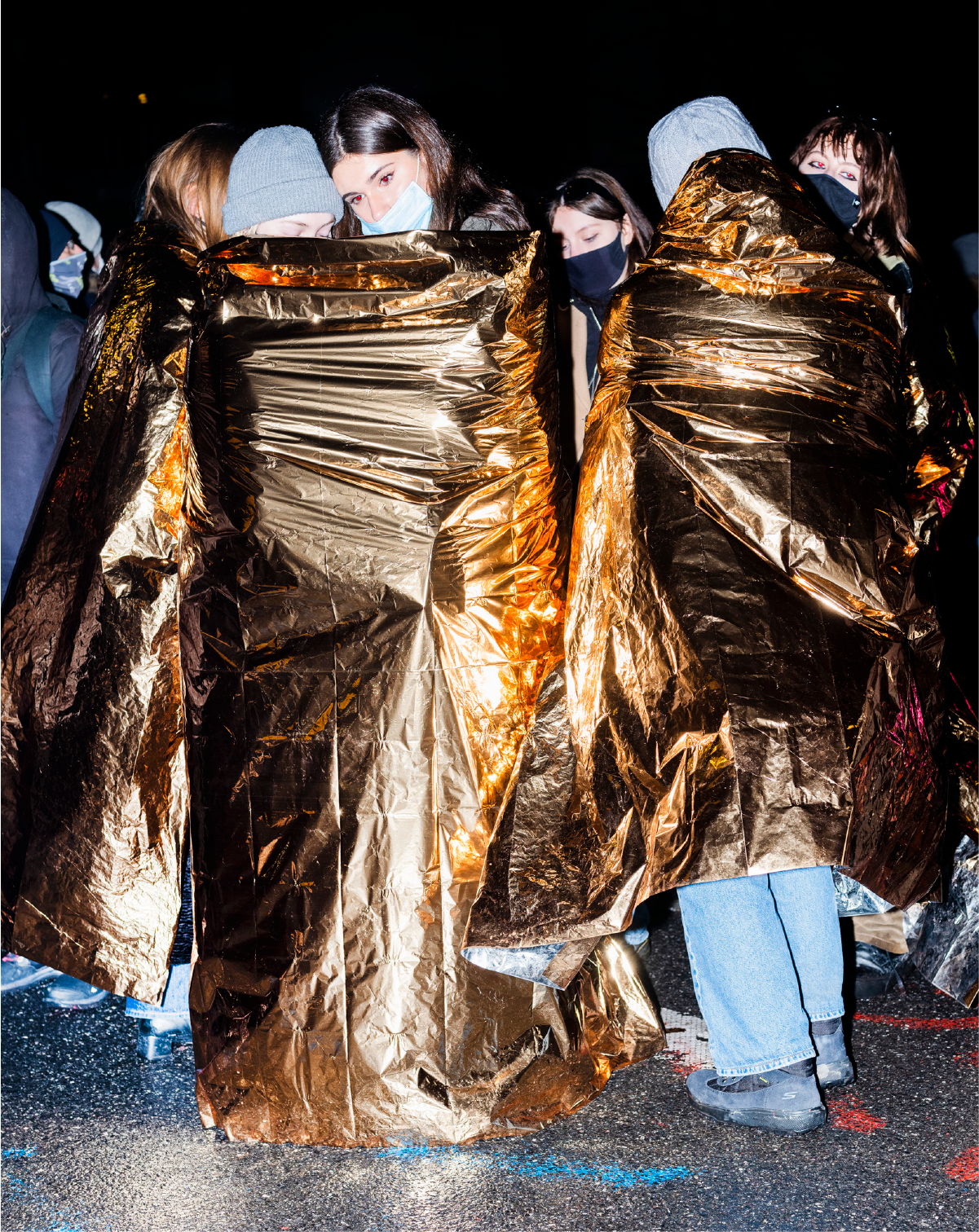
The Archive of Public Protests, Digital Photo, 2020. Courtesy of Artists.
[今回の抗議運動では]言葉がとても重要でした。パブリックな場面で通常用いるような種類の言葉から逃れようとしていました。参加者たちは、一般的に俗悪とか攻撃的とか見なされるような言葉づかいをあえて選んでいます。どれだけ私たちが政府に対してうんざりして、希望を失くしているのかを示すために。参加者たちは、あらゆる境界をある意味で越えようとしているのです。デモや抗議活動は、OSK(Ogólnopolski Strajk Kobiet:全ポーランド女性ストライキ)と呼ばれる団体によって主導されていました。作家やアクティヴィストが設立した団体です。
Because the language was very important. Their use of language was escaping normal public kinds. It was not used in the public sphere. Protesters were using lots of words which we considered vulgar or offensive, but it was made on purpose to show how upset and how hopeless people were towards the government, so they just tried to cross all the boundary in a way. It was basically led by a NPO called OSK (Ogólnopolski Strajk Kobiet, OSK). It’s an organization established by a writer and activists.
1993年以来、ポーランドでは中絶に関してとても厳しい規制がなされてきました。それは教会と政府との折衷案として誕生したものです。[共産主義政権の崩壊後]彼らはある種のカトリックの国家を作り上げたかったのです。当時も、規制の強化に対する抗議運動が起こりました。私たちはもう政治的な駆け引きにはうんざりしてるんです。国民を尊重しないで民主主義にそむく政治家たちには皆うんざりしています。そういった意味では、この抗議運動は中絶の規制に対する抗議以上のものであり、ある意味、ポーランドの民主主主義全体を問うものだと思います。それはとても深刻なことです。デモには若い世代の人たちもたくさん参加していました。彼らは共産主義時代を経験していません。当時の規制や政治ゲームを知らないのです。それがいまも続いていることも。彼らは新しい何かを求めているのです。まだ見ぬ市民のための国家を。
In Poland since 1993 there is this bill which restricted very much all the abortions. It was a “compromise” between the state and the church. They tried to implement a kind of Catholic state. There were protests against tightening the abortion laws back them. We had enough, we were fed up with politicians who do not respect people and how they are violating the democracy. In this sense, this protest was more than just a protest against abortion laws, it questions the whole Polish democracy in a way. That was very serious. A lot of young people were participating in it. They didn’t live through communism. They don’t know the restrictions and all this political games at that time, which we are still living in. They want something new, you know, they want civic state which is not given to them.
若い世代の人々は1993年に起こったことを知っていますか?
Do young people know about what happened in 1993?
知らないと思います。当時子どもだったり、まだ生まれていなかったり。あまり興味を持っていないと思います。1993年の抗議運動自体、あまり一般には知られていません。私ですら、数年前に知りました。体制転換期の当時の社会情勢は、失業や社会保障の問題でもちきりでした。だから、人工妊娠中絶規制の問題にはあまり注意が払われていませんでした。それに、ふつうの若い人たちはあまり歴史に興味を持っていません。
They don’t know. They are kids back then, or they don’t even exist at that time. They are not really interested in it. The 1993 protest is not a common knowledge. I wasn’t even aware of it a few years ago. Polish society at that time was busy with something else, you know. It was a transformation time and people were losing jobs and a lot of people lost social security, so the restricted law was not paid much attention. And generally young people are not really interested in history.
私たちの展覧会は1993年を出発点にしました。展覧会を見た若い人たちは、1993年に何が起こったのかを知ることになります。彼らは自分たちの身体に関することには興味を持っています。それにこの法律はまず彼らに直接的に影響するものです。
Our show somehow puts 1993 as a starting point. Young people can get the knowledge from our show. Because they care about their body. Because this law is very much affecting them for the first place.
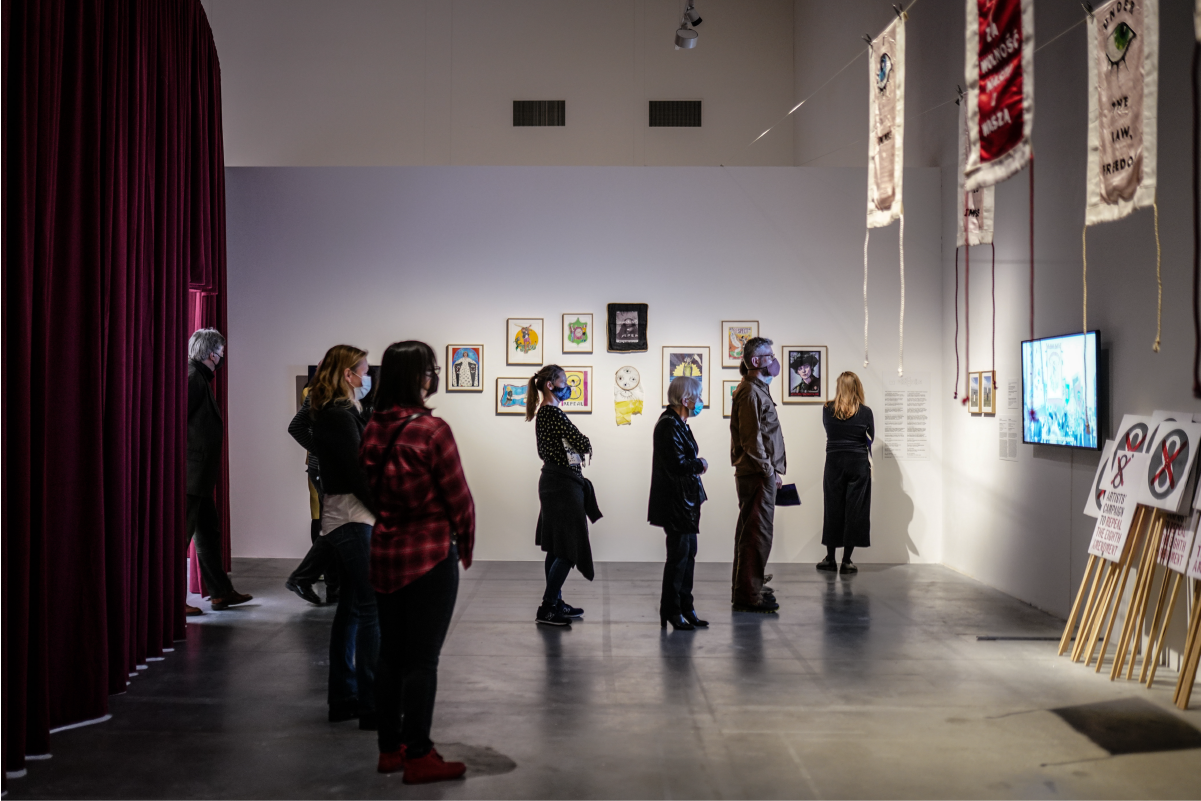
“Who Will Write the History of Tears. Artists on Women’s Law” exhibition view, Museum of Modern Art in Warsaw (26.11.2021-27.03.2022). Photo: Sisi Cecylia
「女性ストライキ」は大きなインパクトを与えたと思います。
The Women’s Strike really made a big impact.
そうですね、私たちの考え方に巨大なインパクトを与えました。私たちは、物事が変えられると言うことに気づいたのです。最も重要なことは、この抗議運動が、かつて閉じているようにみえた場所を開いた点にあると思います。想像の空間、[物事の]異なるあり方が可能であると考えることのできる想像上の空間です。[物事を変えることは]時間や行動の問題であって、それは全て私たちにかかっている、そのことに気づくことができたのです。
Yes, it made a huge impact on our head. It really made us realize that we can change. The most important thing here is that it opened up the space that seemed to be closed before. The space of imagination, or imaginative space where you think “of course, it’s possible”, “of course we can have it different!” It’s just a matter of time or taking actions, and it’s depending on us.
これは、展覧会に訪れた人も言っています。私たちはもっと[政治や社会に]関わっていかなければならない。私たちならできるはずです。だって、女性は社会の半数以上なのですから。できるはずです。もちろん政治家たちは、すでに気づいています。1993年の議論がもう適切ではないことも。[当時目指されていた]カトリックの国家などありえないのです。
This is something we hear from people who came to our exhibition. We need to be more involved. We can do it. I mean, women are more than a half of the society, we can do it. And of course politicians are aware of it. And the arguments from 1993 is not relevant anymore. We cannot have a Catholic state. That’s not gonna happen.
《誰が涙の歴史を書くのか》
今回の展覧会のコンセプトはどのようにうまれましたか?
How did you start conceptualizing this show?
展覧会の発端は2017年に遡ります。5つの美術館による「インターナショーレ」という国際連携プロジェクトがあって、1990年代のリサーチをする助成金を申請していました。その時、中絶関連法の厳格化とそれに対するアーティストの反応というのが良い出発点かと考えたりしていましたが、結局そのアイデアはあとで取り下げました。
We started to work on the show basically back in 2017. There was an international coalition of 5 museums called Internationale. We were applying for grants to make a research about 1990s. We thought that tightening of abortion law and artistic reaction could be a good starting point for a show, but we abandoned this idea later.
どうしてですか?
Why?
当時はあまり適当とは思えなかったからです。2016年に初めての抗議運動がありましたが、政府はそれ以上法改正を進めようとはしなかったので、私たちは何も変わらないだろうと考えました。でも、政府は再び人工妊娠中絶の規制に取り組み、この「女性スト」が起こりました。それで私たちは心の中で一線を超えたんだと思います。私たちはパブリックに向けて何かをいうことができるし、もう後戻りできないと分かっていました。この展覧会を行うことは、芸術機関として危険かもしれないと理解していましたが、同時に成功するだろうとも思っていました。なぜなら、人工妊娠中絶規制に関する議論はすでに社会に浸透しているから。脅されたり制限を受けたりせずに、私たちは議論のプロセスを加速させることができるのです。
It seemed not relevant then. The first wave of protests were back in 2016. The government did not take the further actions, so we thought nothing would change. But they started to work on it again, and then this protest happened. It really crossed a line in our minds. We are disposable to say publicly. We knew that this exhibition might be risky as an institution, but on the other hand we knew that it went well. Because it’s already there. We could basically accelerate this process. You don’t have to be intimidated, or feel restricted saying those things.
この展覧会を開催するには良いタイミングだったということですね。
So it is a kind of good timing that you are holding this exhibition.
そうですね、完璧だったと思います。展覧会の直前に、とても悲しい事件がありました。ポーランドの地方都市で、妊娠中のトラブルで女性が死亡してしまったのです。医師たちは、胎児が亡くなるまで堕胎して女性の治療を行おうとしなかったため、女性は死亡してしまいました。この種のケースは実はポーランド中で頻発していることが分かり、抗議運動が再燃しました。その時の抗議運動で用いられたスローガンは[女性の命を]「もうひとつも奪わないで(Not Even One More)」という、アルゼンチンの女性運動から引き継いだものでした。私たちの展覧会が始まったのは、この事件の直後でした。だからこの展覧会は、ストリートで起っていることに対するリアクションであり答えでもあるのです。
Yes, it’s the perfect timing. There is this sad case in the press. One woman from a tiny city in Poland died because of the fact that there was something wrong with her pregnancy. Doctors didn’t want to make an abortion, because the fetus was still alive, so they were waiting until it died. And the woman died. And this caused another wave of protest. It turned out that that was not a single case. Those were happening all over and people were mad. So they took off to the street again. The slogan used in the protest this time, Not Even One More, was taken from the protest in Argentina before. Our exhibition opened just after this case, so it was really like a reaction or answer to what happened in the street.
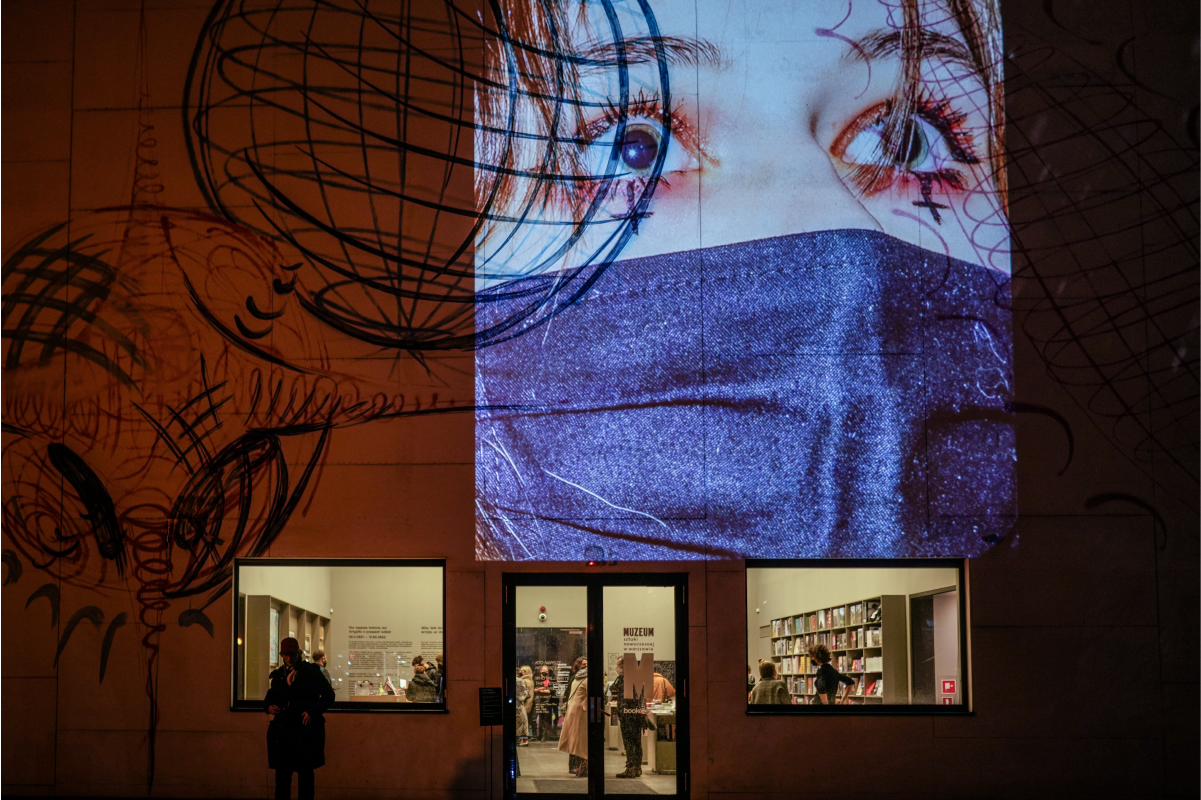
“Who Will Write the History of Tears. Artists on Women’s Law” exhibition view, Museum of Modern Art in Warsaw (26.11.2021-27.03.2022). Photo: Sisi Cecylia
国立の美術館として、政府から何か規制などありましたか。
MSN as a national, public institution, was there any restrictions or something from the government?
政府はいつでも展覧会を中止することができるし、もしそうなったらそれに関する騒動も起こるでしょう。でもまず、この展覧会の準備にとりかかった際、私たちは安易な挑発は避けるようにしました。宗教を攻撃したり、カトリックを冒涜することは私たちの意図ではありません。そういった表現には興味ありません。私たちは、女性が虐げられ、自身の身体に対する決定権を剥奪されている歴史的な構造を見せることに興味があるのです。それが基本的なテーマです。展覧会自体はとても美しいものだと思います。作品は詩的でカラフルです。騒動を引き起こすようなものはありません。
We are aware that they can close the exhibition at any moment, and there might be a scandal connected to it, but first of all, when we start working on the show, we try to avoid a kind of cheap provocation. Attacking the religion or being offensive against the Catholic symbols are not our point. We are not interested in them. We are interested to show a kind of historical mechanisms of how women are subjugated, and forced to, deprived of making decisions on their bodies. That was basically our main themes. The exhibition is very beautiful. The works are very poetic and colorful, so there is nothing to cause fires.

“Who Will Write the History of Tears. Artists on Women’s Law” exhibition view, Museum of Modern Art in Warsaw (26.11.2021-27.03.2022). Photo: Daniel Chrobak
人工妊娠中絶禁止やその法について語ることは、とてもパブリックなものになっています。政府も、この議論が避けられないものであることに気づいているでしょう。そして、政府はこの問題に関しては多数派ではないのです。だから政府側から私たちの展覧会に関しては沈黙が続いています。意外だったのは、最も過激なカトリックのラジオチャンネルのひとつで、この展覧会が推薦されていたことです。何かの間違いかもしれないですが(笑)
It became a very public thing to speak about the restrictions and abortion laws. I think that the government also realizes that you cannot escape this discussions somehow. And they are not in majority anymore with this issues. There is a silence about our show from the government circles, but it was really funny because we noticed from our press overview that one of the most radical Catholic radio channel recommended our show. Probably a mistake.
どういう意味なんでしょうね(笑)
What does it mean!!??
本当に、どういう意味なんでしょう。私たちにも分かりません。展覧会に来るのは大半が若い人たちです。今のところ特に問題は発生していません。右派団体も来ませんし、抗議運動も起こっていません。展覧会はあと2ヶ月あるので、何か起こりうるかもしれませんが、全てうまくいくよう祈っています。
Exactly. We don’t know. People coming to the show are mostly very young and we didn’t have any incident in the exhibition. There is no right wing organizations or no protests. So far. Exhibition stays two more months, so anything is still possible, but let’s hope everything will be fine.
(2022/01/25、オンライン、聞き手:登)
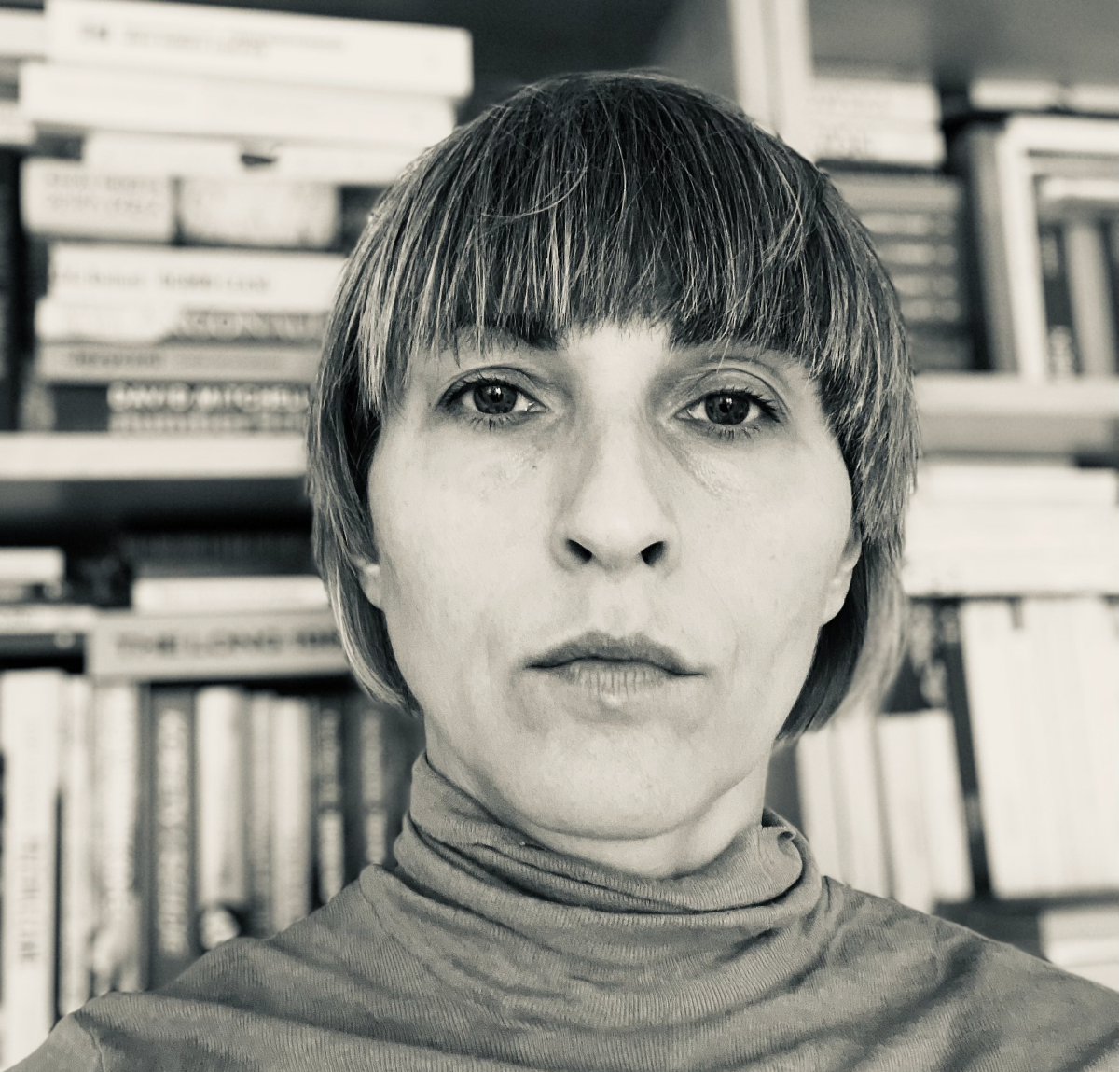
キュレーター、芸術研究者、現在ワルシャワ近代美術館のキュレーター。同美術館では“Niepodległe. Women and the National Discourse”(2018)、“Danwen Xing. A Personal Diary”(2017)、Tarek Abou el Fetouhと共に“Least the Two Seas Meet”(2015)などの展覧会のキュレーションのほか、映像やパブリック・プログラムを担当する。最近では共産党時代のポーランドにおけるグローバル・サウス出身の学生についての書籍“Hope is of a Different Colour:From the Global South to the Łódz Film School”(2021)を共編。
Magdalena Lipska
She is a curator and art theorist currently working at the Museum of Modern Art in Warsaw where she curated and co-curated exhibitions such as “Niepodległe. Women and the National Discourse” (2018) “Danwen Xing. A Personal Diary” (2017) and “Least the Two Seas Meet” (2015) with Tarek Abou el Fetouh as well as film and public programmes. She recently co-edited a volume on the Global South students in the communist Poland entitled “Hope is of a Different Colour. From the Global South to the Łódz Film School”(2021).


